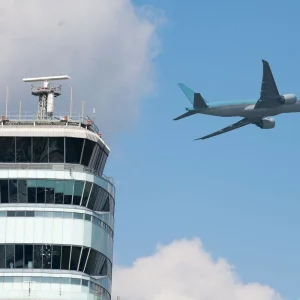UAE Dirham to Pakistani Rupee Exchange Rate Today – March 26, 2025
The exchange rate between the UAE Dirham (AED) and the Pakistani Rupee (PKR) is a crucial financial indicator for individuals and businesses engaged in cross-border transactions, remittances, and trade between the United Arab Emirates and Pakistan. On March 26, 2025, the exchange rate stands at approximately 1 AED = 76.27 PKR, reflecting the ongoing economic trends and market dynamics influencing both currencies.
Current Exchange Rate and Recent Trends
The AED to PKR exchange rate has seen fluctuations throughout March 2025. The lowest recorded rate this month was 76.111 PKR per AED on March 3, while the highest reached 79.868 PKR per AED on March 10. The average exchange rate for the month has been around 76.561 PKR per AED. These fluctuations are attributed to multiple factors, including supply and demand, inflation rates, global economic conditions, and central bank policies in both countries.

Factors Influencing the AED to PKR Exchange Rate
Several factors contribute to the movement of the UAE Dirham against the Pakistani Rupee. The most significant ones include:
- Economic Conditions in Pakistan: The stability of the Pakistani economy plays a crucial role in determining the PKR’s strength. High inflation, trade deficits, and fiscal challenges often lead to depreciation in the rupee’s value against the AED.
- UAE’s Economic Performance: The UAE’s strong economy, supported by its robust oil sector, tourism, and trade, ensures the stability of the Dirham, which is pegged to the US dollar. This stability makes the AED a strong currency against weaker economies.
- Remittance Inflows: Pakistan is one of the largest recipients of remittances from the UAE. The volume of remittances sent by Pakistani expatriates in the UAE directly impacts the demand for PKR, affecting the exchange rate.
- Trade Relations: Bilateral trade between the UAE and Pakistan affects currency demand. Any significant increase or decrease in trade volume can lead to fluctuations in the AED to PKR rate.
- Interest Rate Decisions: Monetary policies set by the State Bank of Pakistan (SBP) and the UAE Central Bank impact exchange rates. Higher interest rates in Pakistan can attract foreign investment, strengthening the PKR, while a rate cut may lead to depreciation.
- Foreign Exchange Reserves: The level of forex reserves maintained by Pakistan’s central bank influences the rupee’s strength. A low reserve level can put pressure on PKR, causing depreciation against the AED.
Impact on Various Sectors
1. Impact on Pakistani Expats in the UAE
The AED to PKR exchange rate directly affects millions of Pakistani expatriates working in the UAE. A higher AED to PKR rate means that expats can send more money back home, benefiting their families. Conversely, a strengthening PKR reduces the value of remittances.

2. Impact on Importers and Exporters
Pakistani businesses that rely on imports from the UAE face higher costs when the PKR weakens against the AED. Essential imports, including petroleum products, machinery, and electronics, become more expensive, leading to inflationary pressures. On the other hand, a weak PKR benefits Pakistani exporters by making their goods more competitive in UAE markets.
3. Tourism and Travel
For Pakistani tourists traveling to the UAE, a weaker PKR means higher costs in terms of accommodation, shopping, and transportation. Conversely, UAE residents visiting Pakistan benefit from a stronger AED, as their purchasing power increases.
4. Real Estate Investments
Many Pakistanis invest in UAE’s real estate market, particularly in cities like Dubai and Abu Dhabi. Fluctuations in the AED to PKR rate impact property investment decisions, with a stronger PKR making UAE real estate more affordable for Pakistani investors.
Forecast for AED to PKR in 2025
Based on recent economic indicators and global market trends, experts predict moderate fluctuations in the AED to PKR exchange rate throughout 2025. The following factors will play a crucial role in determining future exchange rates:
- Pakistan’s Economic Reforms: If Pakistan successfully implements economic reforms, controls inflation, and increases forex reserves, the PKR could stabilize or even appreciate against the AED.
- Oil Market Trends: The UAE’s economy heavily depends on oil revenues. Any major shifts in global oil prices can influence the Dirham’s strength.
- Global Economic Developments: The performance of major economies, including the US, China, and the EU, impacts currency markets. A strong global economy generally supports stable exchange rates.
- Political Stability: Stability in both Pakistan and the UAE will influence investor confidence and foreign exchange flows.
How to Get the Best Exchange Rate
For those involved in currency exchange, whether for remittances, business transactions, or travel, the following tips can help secure a favorable exchange rate:
- Compare Rates: Check rates from different exchange houses, banks, and online platforms before making a transaction.
- Monitor Market Trends: Keep an eye on exchange rate trends and transfer money when the rate is in your favor.
- Use Digital Payment Platforms: Many fintech companies offer competitive rates and lower transaction fees than traditional banks.
- Avoid Last-Minute Transactions: Plan currency exchanges in advance to avoid unfavorable rates.
Conclusion
The AED to PKR exchange rate remains a key financial metric for Pakistanis living in the UAE, businesses engaged in trade, and investors in both countries. As of March 26, 2025, the exchange rate of 1 AED = 76.27 PKR reflects the ongoing economic realities in both nations. By understanding the factors influencing this rate and its implications, individuals and businesses can make informed financial decisions. Keeping an eye on market trends and adopting strategic financial planning can help mitigate risks and maximize opportunities in foreign exchange transactions.
Do follow Uae stories for more Updates














